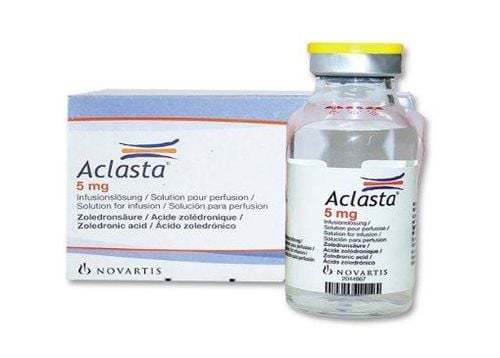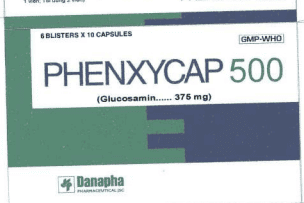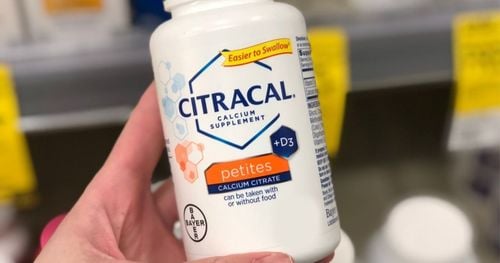This is an automatically translated article.
Hacosamine is a medication used to relieve symptoms of mild to moderate osteoarthritis of the knee. However, in order for the drug to be most effective, to avoid side effects, patients should consult a doctor or a qualified specialist before using it.1. What are the effects of using Hacosamine?
Hacosamine is a drug that contains the main ingredient Glucosamine sulfate. This is a naturally occurring sugar found in the fluid and cushioning tissues of joints (also known as cartilage). In addition, glucosamine is also found in the hard shell of some seafood such as shrimp, crab, oysters, mussels.Besides, these substances can also be made in the laboratory and used to supplement people with osteoarthritis, effectively reducing pain.
However, although Glucosamine drugs have the ability to reduce knee pain in people with moderate to severe osteoarthritis, they are not as effective in people with mild knee pain, pain for a long time, overweight...
In addition, some research papers have shown that although glucosamine sulfate has the ability to relieve pain more effectively than using ibuprofen, the duration of action is slower. Patients will need to wait 4 to 8 weeks for glucosamine sulfate to have the best effect.
2. Indications and contraindications of Hacosamin
With the above effect, Hacosamin is indicated for use in cases of osteoarthritis, primary and secondary osteoarthritis in some locations such as knees, hips, hands, spine, shoulders. The drug is also suitable for people with periarthritis, osteoporosis, fractures, atrophy, chronic and acute arthritis.In addition, you need to note that Hacosamin is contraindicated for people with hypersensitivity to any ingredient of the drug.
3. Dosage and how to use Hacosamin
People with mild and moderate osteoarthritis: Use the drug once a day with a dose of 500mg. The duration of use lasts about 4-12 weeks or longer depending on the condition of the disease. Patients can repeat 2-3 courses of treatment in 1 year as needed. People with severe osteoarthritis: Use the drug 3 times x 500mg in the first 2 weeks, then reduce to 500mg / time x 2 times / day for the next 6 weeks. Use maintenance dose: Within 3-4 months after taking the drug at a dose of 500mg / time x 2 times / day. For Hacosamin to work best, patients should take the drug 15 minutes before meals.
4. Hacosamine side effects
Hacosamin is quite safe, with few side effects. However, during the use of the drug, patients still have the risk of experiencing some problems such as: Constipation, diarrhea, drowsiness, headache, heartburn, nausea, rash.
When any abnormal signs appear, the patient should stop taking the drug and consult a doctor.
5. Drug interactions
Hacosamine may interact with warfarin (Coumadin) increasing the risk of dangerous bruising and bleeding.
In addition, Hacosamin also has a risk of reducing the effectiveness of some of the following drugs:
Acetaminophen (Tylenol). Drugs used during chemotherapy include (Adriamycin, Rubex); Etoposide (Etoposide) and teniposide (Vumon). Diabetics (Amaryl), Glyburide (DiaBeta), pioglitazone (Actos), insulin (NovoLog), and Rosiglitazone (Avandia).
6. Be careful when using Hacosamin
Hacosamine may affect blood sugar and insulin levels. Patients with diabetes or insulin resistance should consult a doctor before use. Hacosamine should not be used by women who are pregnant or planning to become pregnant and for children < 12 years of age. When taking Hacosamine, it is necessary to monitor blood sugar regularly in diabetic patients. Basically, before using Hacosamin, patients need to pay attention to the preparation information, content and origin of the product. This helps the drug to work best in improving osteoarthritis.
Please dial HOTLINE for more information or register for an appointment HERE. Download MyVinmec app to make appointments faster and to manage your bookings easily.













